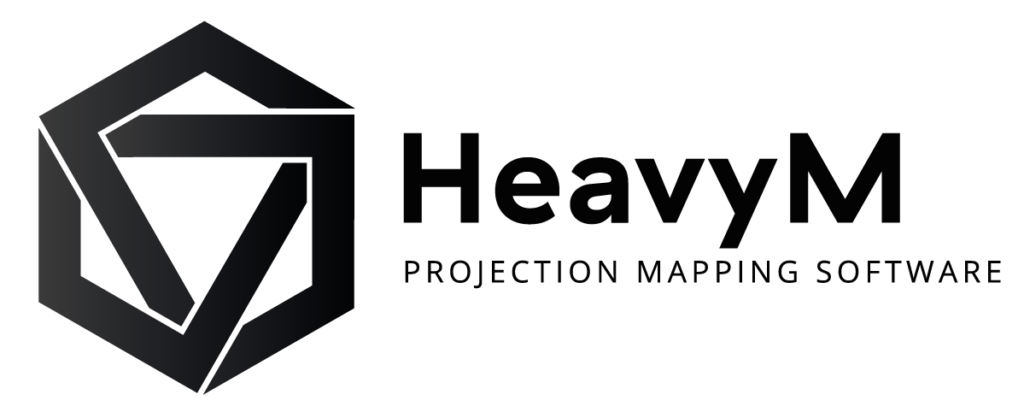Cinémachine : Stage Lighting Design with Mapping
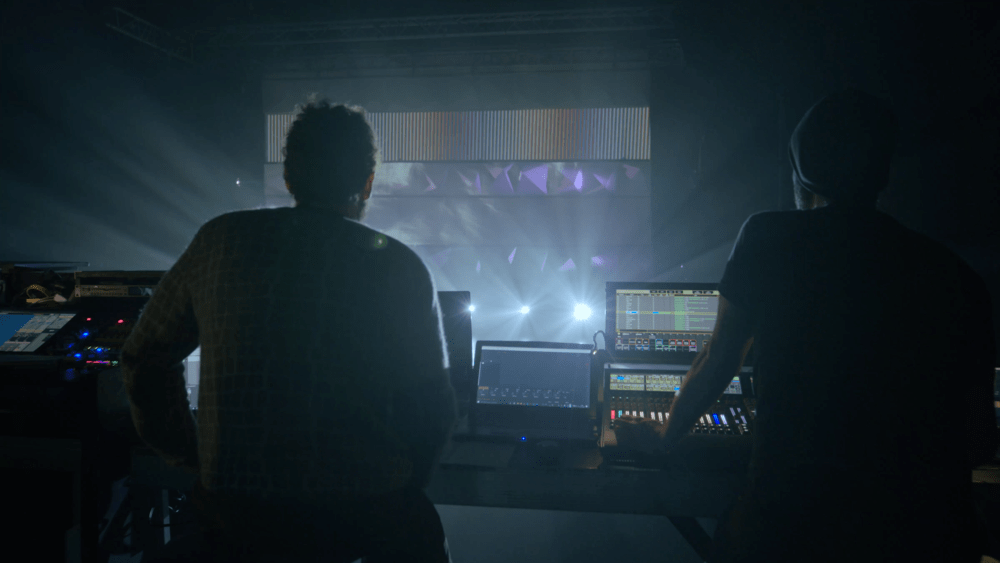
Here’s to an audiovisual stage lighting design with mapping: Cinémachine. But what is Cinémachine exactly? It is a projection artwork condensing a multitude of creative techniques in order to convey the artist’s message. Nothing quite new, you’d say? Well, you’d be quite wrong. When the technologies are new, just as the means used are, and therefore all the combinations by definition, then we have all the ingredients for an innovative performance.
In our case, the use of light consoles, projection mapping and sound design. After seeing what they can respectively bring to the table, we’ll dive into the specificities of that show.
What is stage lighting design for?
Stage lighting design is as old as theatrical representation itself. In fact, for starters, lights allow us to see. Therefore, light, or lack thereof determined the occurrence of a play in the ancient times. Every variation, nuance and ideas incorporated in stage lighting design derives from that notion.
Stage lighting design is an art form. It’s used to illuminate a performance venue and make an impact on an event, giving visual direction and shaping the environment.
Stage lighting design can deliver creative wonders in a myriad of ways. In that way, it covers many functions relative to the stage production, whether it is regarding the audience, the ongoing show or the creative intentions themselves.
Light up the stage
Stage lighting’s most fundamental goal is to illuminate the performers, sets, and props so that the audience can see everything that is supposed to be seen onstage. Lighting that set up well enough can hinder the show. Dim lighting, for example, makes it more difficult for audience members seated close to the stage to see the actors’ facial expressions.
Highlight specific areas
You may also use stage lights to guide the audience’s gaze in the right direction. For example, the bulk of a stage may be pitch black in the most dramatic situations, with only one spotlight beaming on a focal point. In many other cases, the lighting designer might begin with a wash, which covers a large area and serves as a light foundation layer. Then, using accents, they may direct the audience’s attention to a specific area, such as a speaker in the front.
Set the scene
Lighting may also aid in the creation of the desired image of a scenario. In some cases, this involves using lights to create optical illusions. Make the stage black when an actor turns a fake light switch in a room, or use a moving light to make it look as if the sun is rising. Backlit scrims can also be used to simulate a starry night, a sunny day, or even a fire.
Set the mood
The mood of the audience can also be influenced by stage lighting. The goal is to match the lighting to the show’s content in order to induce the appropriate emotions in the audience. A gentle, warm light for a joyous moment in a play or gloomy, chilly colors for a sorrowful ballad during a performance are examples of this. Different colors are connected with certain moods. Blue, for example, is frequently connected with melancholy, whereas red is frequently associated with strong emotions such as love or violence.
What does projection mapping bring?
Cinémachine is a Mapping & Lighting Stage design, and now that we’ve seen about the latter part, let’s dive into the former : projection mapping.
First of all, projection mapping, also known as video mapping, is a projection technology used to turn objects, often irregularly shaped, into a display surface for video projection.

It is the possibility of designing surprising graphic and visual environments that bring the public into an immersive atmosphere to live an experience of mutating reality towards another reality.
Outgrowing its function, projection mapping is nowadays used to enhance artistic performance in concerts and theatre, provide an atmosphere for a product launch or yet animate a corporate event. And with mapping solutions flourishing, the path to delivering engaging experiences has never been clearer.
Projection mapping takes on its true meaning when combined with three-dimensional notions. And in the same regard, video mapping surfaces are infinitely varied. They range from the facade of a monument to an architectural detail, from a stage set to a small object or a simple wall… Geometric accessories are also an excellent option to easily obtain a strong visual impact.
All elements of reality can be transformed and metamorphosed by this virtual technology. This technique goes further than light design thanks to softwares that allows creating trompe-l’oeil in motion, spectacular optical illusions and 360° projections!
Video Mapping for any projects
Recently, video mapping softwares have democratized the discipline – once reserved for technical experts – by making it accessible to the widest possible audience. Video mapping is now available to events professionals and agencies, experienced artists and entertainment specialists.
Cinémachine
As seen from the notions earlier, in an audiovisual performance, projection mapping is in charge of delivering the creation aspect and displaying the artist’s vision through images. On the other hand, stage lighting design provides for everything in accentuating the creative direction in a given moment. It sets up the tone, the mood and enhances the mapping’s intentions a hundredfold.
Cinémachine is a perfect example of that duality and how it can produce mesmerizing experiences. In fact, it was produced by a lighting designer and creative director with a fondness for mapping.
Who are the artists?
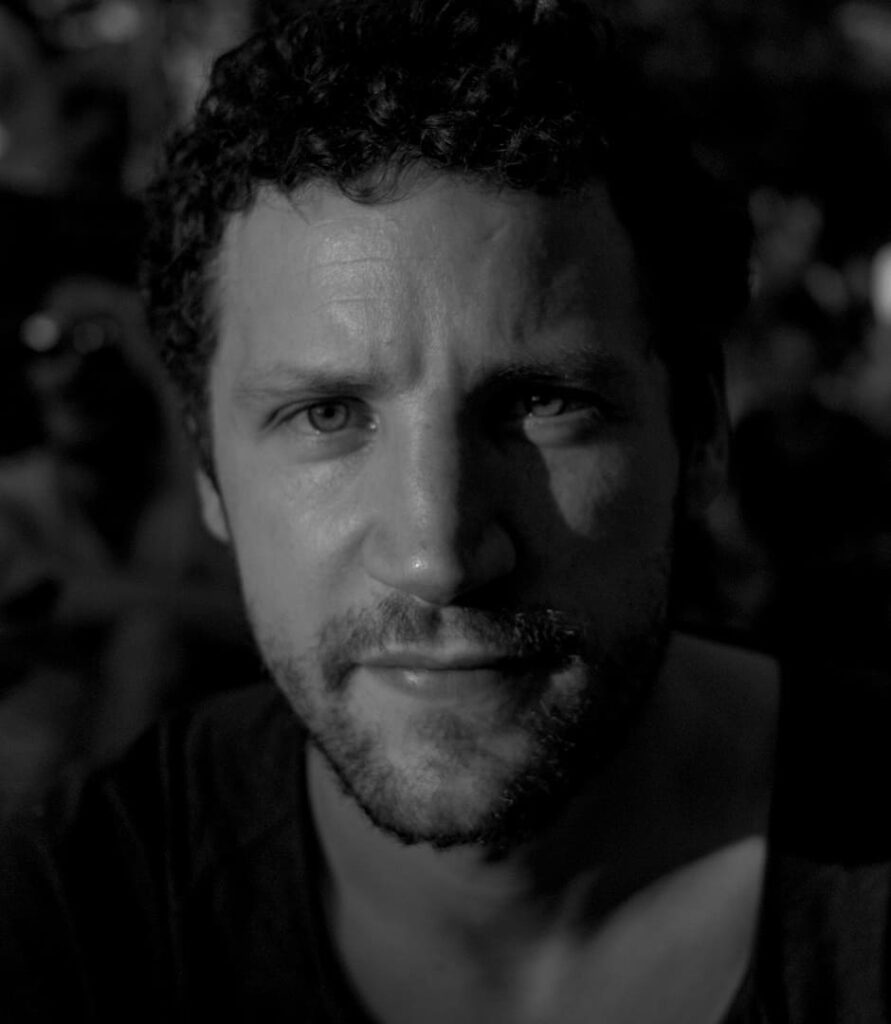
Malo Lacroix
Malo Lacroix is Cinémachine’s creative director. The Ecole Emile Cohl and Ecole Presqu’Ile visual arts alumnus specializes in drawing, painting, graphic design, typography, art history and doesn’t like limiting himself to one register. He approaches figurative as well as abstract forms and considers that styles tend to evolve with time. His main influences are cinema, classical art from antiquity, experimental and non-rhythmic music.
While also loving light as a visual object and form of expression, Malo finds that his practices are complementary with Quentin’s.
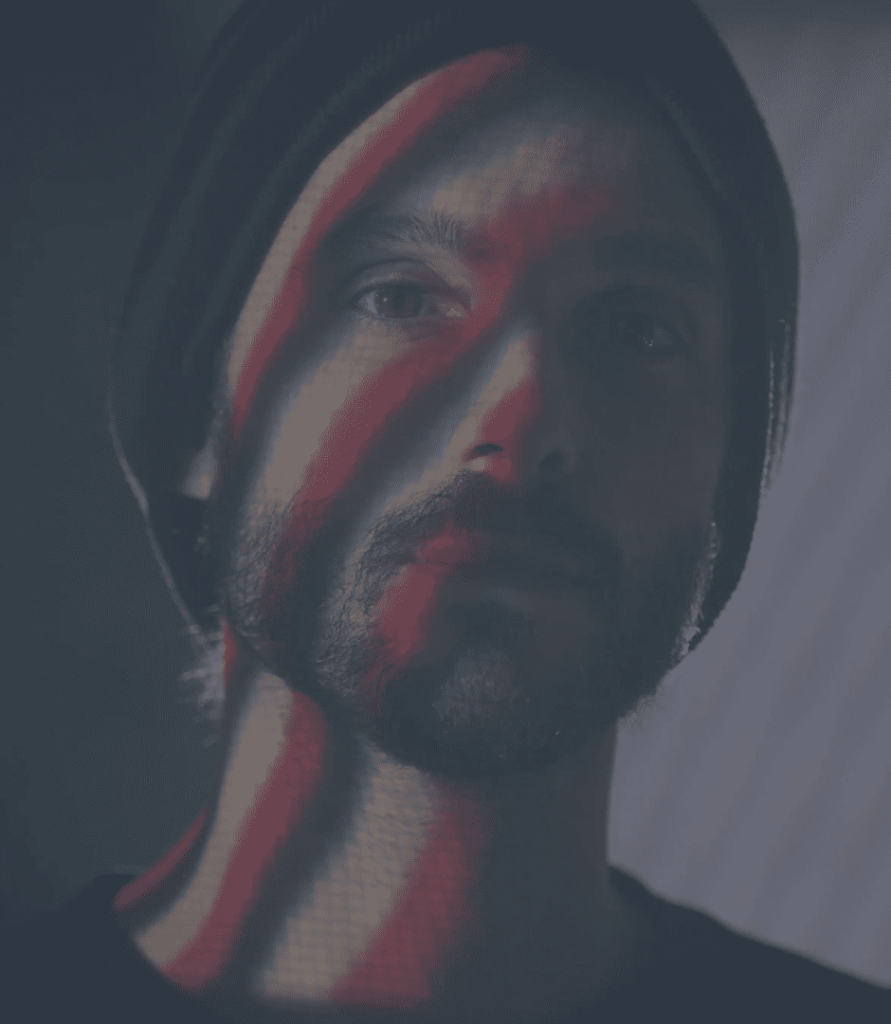
Quentin Douriez
With a background in space design and architecture, Quentin Douriez is the lighting designer of Cinémachine. He is self-taught concerning the GrandMa3, the light console used for the show. Quentin met Malo at creative residency at the Cuizines, in Chelles. He had proposed a scenic implementation with several machines and Malo a work of specific images projected in the background of the stage.
His main specializations are camera, light, painting, photography, software (editing, vectorization, light, controller etc).
What is the concept?
Produced at Les Cuizines in Chelles, Cinémachine is an audio-visual object that questions the principles of physical and digital matter. It is the alliance of video film processes and mapping techniques using a precise surface where aesthetics is at the service of narration.
A project that consists in creating an audio-visual object which is not sufficient for projection only. A project screaming that digital does not replace physical.
The artists consider narration mandatory whatever the form, a guiding thread that takes the spectator somewhere new. As for music, it is a line of conduct, a rhythm, a source that consists of a signal and that can order the presence of images.
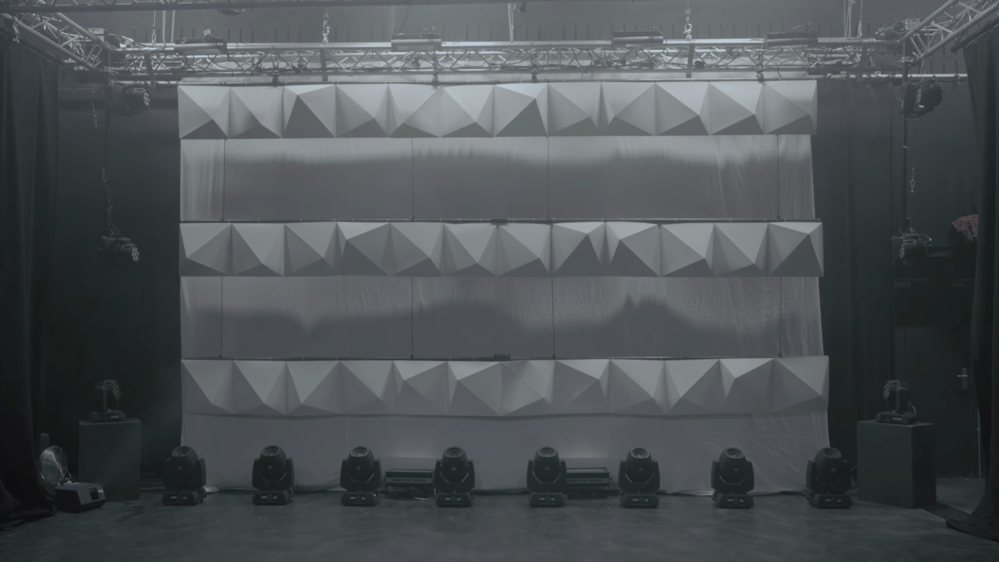
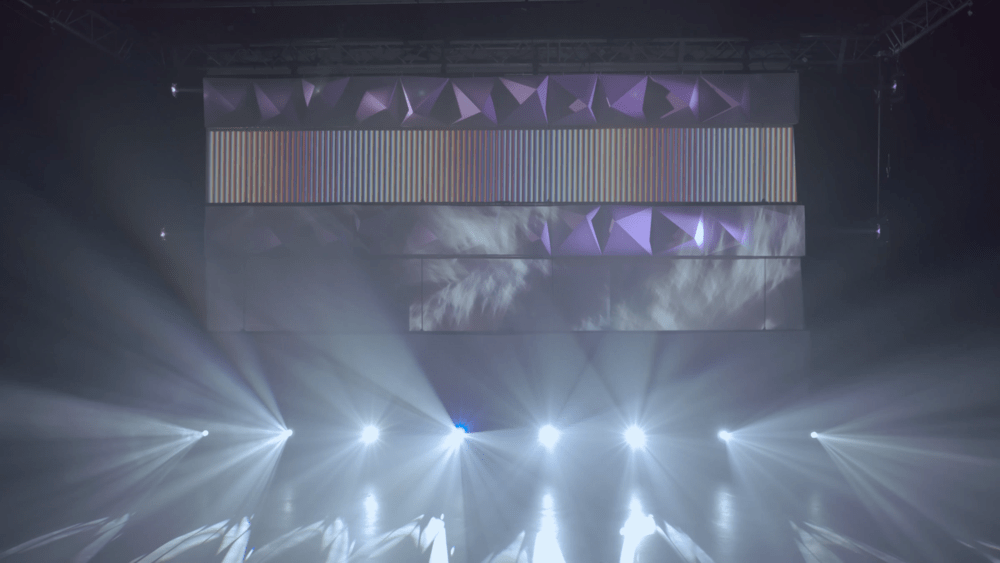
In their minds, projection mapping then becomes an indispensable component as it makes it possible to work on image, motion and volume in a completely different way than projection on a flat surface.
Malo’s wish to create a new form of storytelling lives through this technology. And the duo combines the properties of all tools in a single rendering to question the volumetric dimension of an image and light.
They’re pushed to search for video content and fuse other forms of synchronization.
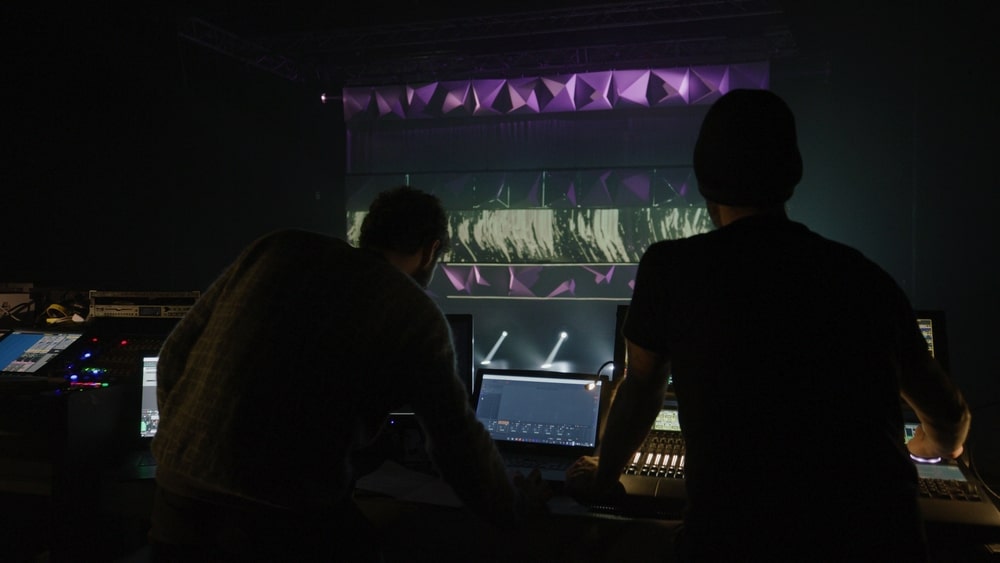
The artists proved insatiable as they discovered other options in terms of image creation and dynamics, or through the adequacy with the light which considers the volume as a receptacle but also as a reactive object.
HeavyM, the projection mapping software, is a key element in their process, as it allows the drawing of shapes and their animations in a fast enough way without having to create motion on a third party software.
They use it to draw shapes, add mesmerizing animations and play the videos they created beforehand.
A new HeavyM invention, the Stak Kit, central to their production
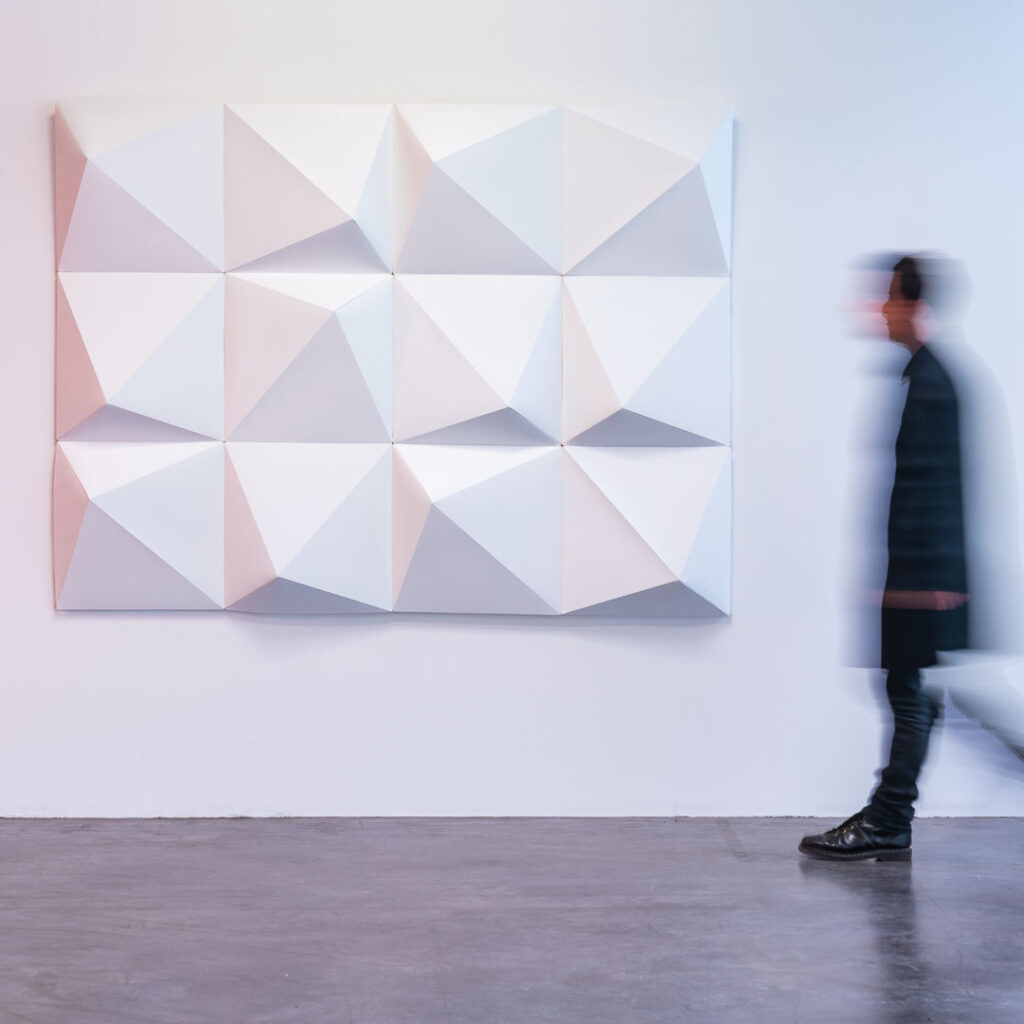
From the beginning they wanted to correctly combine different sources of light with the projected image to push the possibilities of the Stak kits to the maximum and use them as complementary receptacles with that of the more figurative video.
How does it work ?
Now that we’ve seen the creative intention, let’s talk more about the technical aspects.
In fact, one of the key elements of the lighting – mapping duality is that when mapping focuses on what is on the stage, lighting can essentially intervene anywhere in the whole room. It is therefore important to mention the different lighting positions to understand their role in the show.
There are basically 4 types of lighting in stage lighting design :
Front lights
The major source of lighting for a performance is the front lights. In many cases, front lighting will be used to give a wash across the whole stage.
Backlighting
Backlighting is required to provide a more dimensional image in which the object stands out from the backdrop. Backlights are positioned behind the object at the rear of the stage.
Downlighting
Another way to add dimension to stage lighting is with downlighting. Note that some designers use the term “downlighting” to mean lights that are positioned at the feet and cast light upwards, and others use the term to mean lights that are positioned above the stage and shine straight down.
Side lighting
Lights along the stage’s horizontal borders will highlight objects performers from both sides.
In cinémachine’s case, Malo and Quentin created a 10-minute .wav sound file ingrained with hundreds of cues. Each cue activates a preset on the light console in charge of stage lighting design : the GrandMa3.
The GrandMa3 precisely controls each type of lighting mentioned above ; their orientation, wavelength, timing, activation, etc.
On the other hand, the light console is connected to the projection mapping software, HeavyM, through DMX via Art-Net. This allows the GrandMa to send HeavyM the corresponding signals relative to the cue played. In fact, one specific cue represents one preset on the GrandMa that equates to a multitude of DMX actions. One of which consists in activating one sequence in HeavyM.
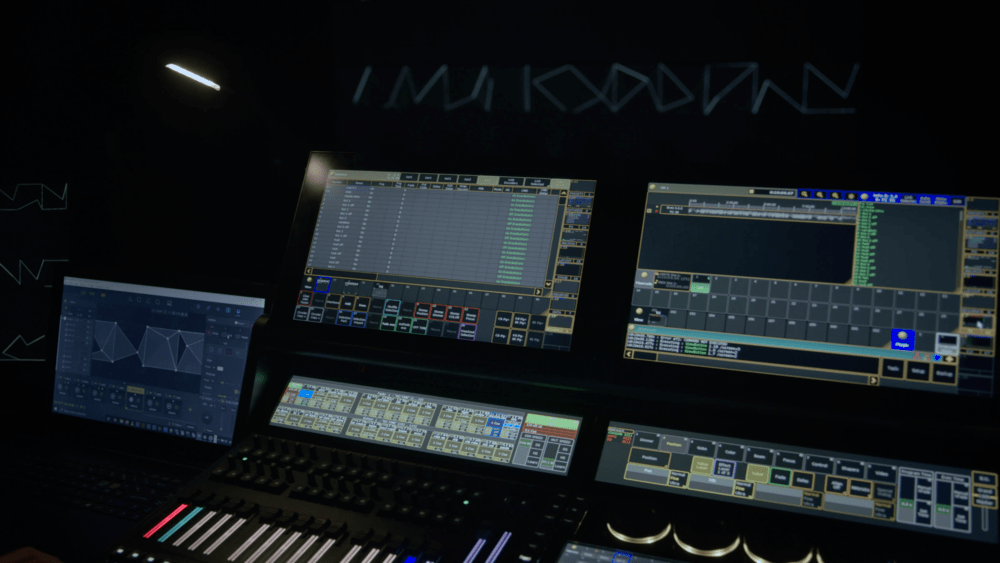
For the show, the creators played the sound file via the Châtaigne software, and each triggered the effect it was supposed to for perfect harmony.
Synchronizing and putting together corresponding signals between softwares was the hardest challenge on this project.
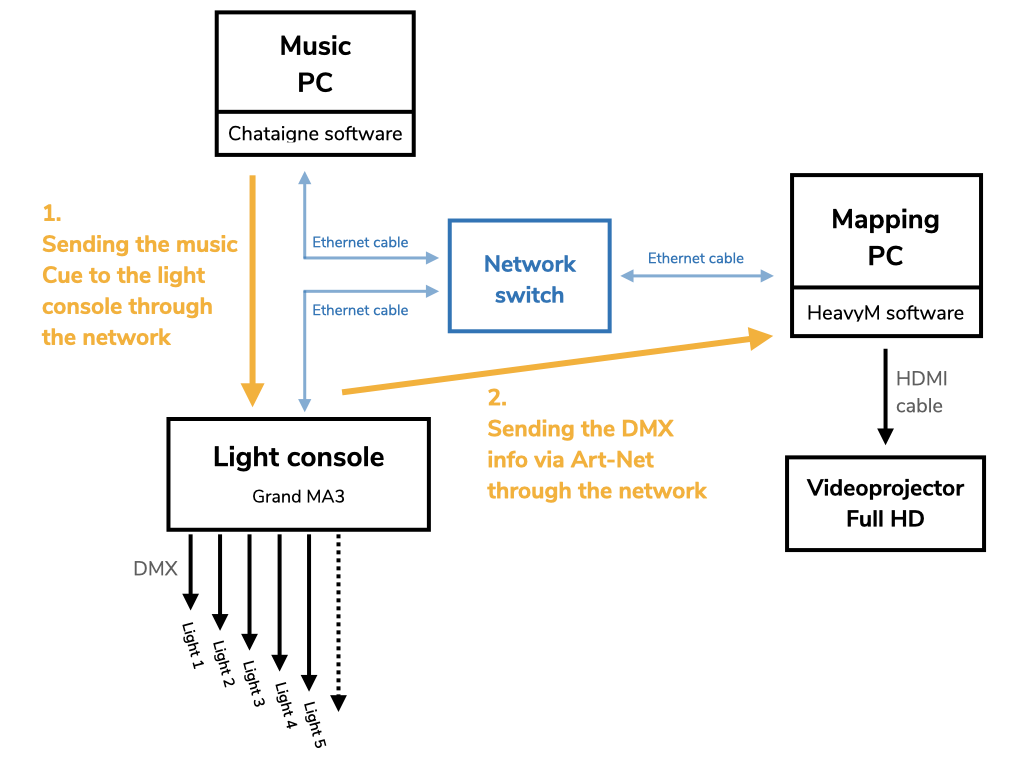
This complex show was made possible through the use of the world’s easiest-to-use projection mapping software. HeavyM enabled complete creative creation through the drawing tools, shaders and video playback on the one hand. While on the other hand, it guaranteed optimal technical liability with the use of DMX.
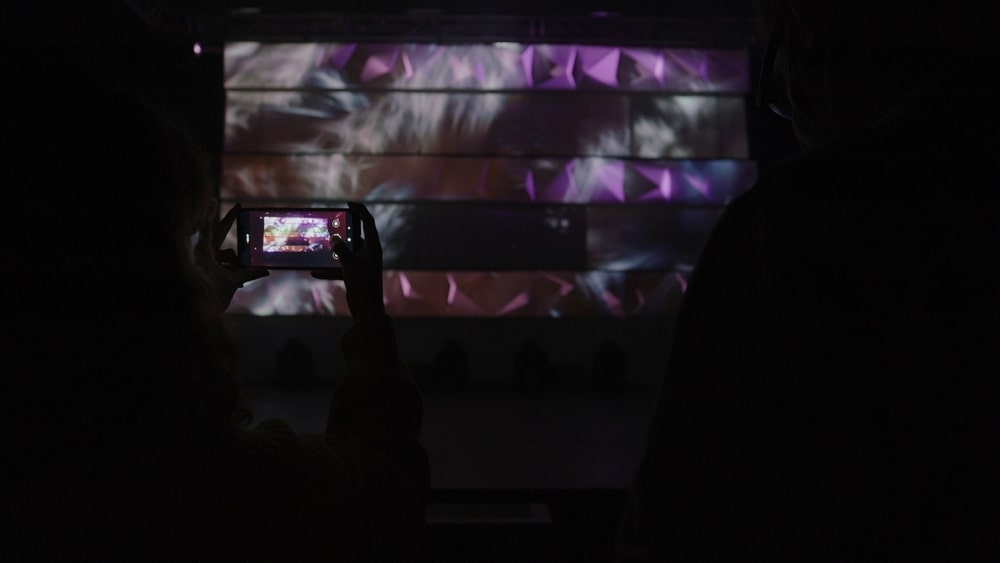
To be continued
Learn more about the Stak kits
The Stak kit is composed of 12 gorgeous square shapes to assemble. It allows artists and professionals to unleash their creativity and easily create stage designs, artistic works, permanent installations, and corporate decorations.
Get inspired by the community
HeavyM is used around the world by a variety of people, resulting in many different types of projects, ranging from corporate set design to interactive installations to artistic decoration.

